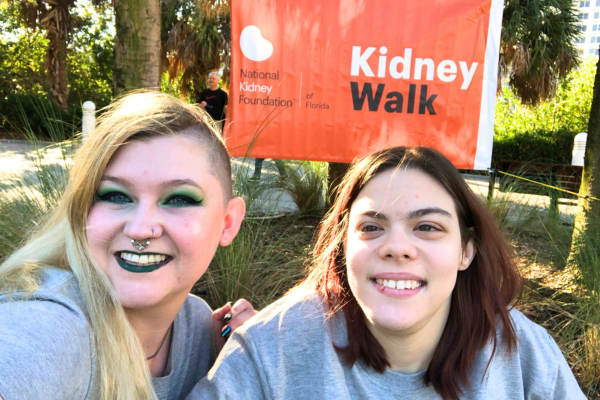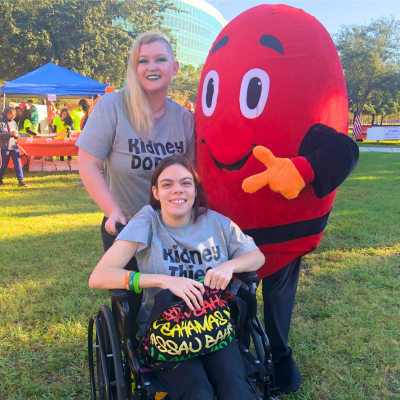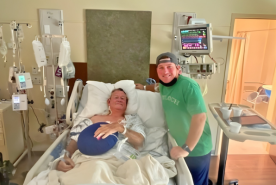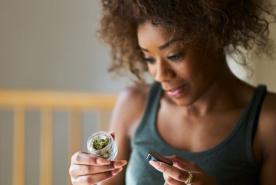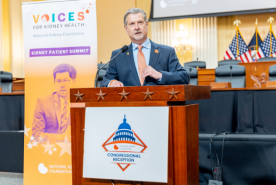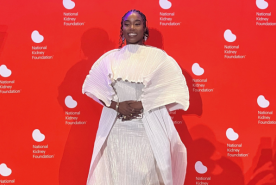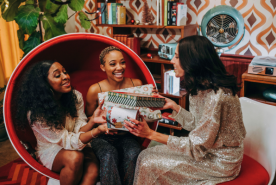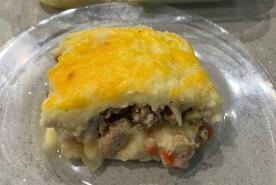June 10, 2025
Read this powerful kidney transplant story about stepsiblings, identity, and living donation.
When Alese's kidneys started to fail, her stepsibling, Daylina, a journalist, didn't hesitate to step up. They changed their life and gave up bad habits to give Alese a kidney.
A Surprise Kidney Diagnosis
Alese was born with cerebral palsy, a condition that affects how a person moves and controls their muscles. Because of that, Alese had regular checkups and many doctor visits throughout her life.
"In 2014, Alese's blood tests showed she had a significant decline in kidney function," said Daylina. "She had stage 3 kidney disease. Her kidneys just stopped functioning as well as they should."
Alese started a kidney-friendly diet, hoping it would slow the disease. Meanwhile, Daylina began learning more about living kidney donation.
"I wasn't the healthiest at that time," said Daylina. I drank too many energy drinks, ate poorly, and did not drink enough water."
To prepare for the possibility of donating, Daylina started cutting out energy drinks, eating better, and staying hydrated.
Getting Approved to Donate
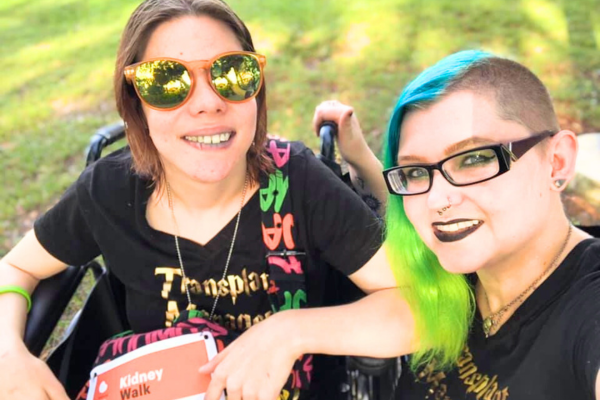
By fall 2017, Alese's kidney function dropped below 20 mL/min. This was low enough for Alese to get placed on the kidney transplant waitlist. Her family began the kidney donor evaluation.
"Her blood family members were not good candidates due to weight or health issues," said Daylina. "I passed the kidney donor phone screening in October with one exception–I needed to lose 15 pounds.
Daylina began their weight loss journey as they continued through the evaluation. They were thrilled to learn they matched Alese.
"She's my stepsister—we're not blood-related—so the fact that we matched is amazing," said Daylina. "I passed all the tests: heart checks, cancer screenings, bloodwork, and more."
Because Daylina has depression, anxiety, and ADHD, they needed a therapist to sign off on their ability to safely donate.
"I got the letter from my therapist signing off on my donation. I also lost weight. The only issue was a small kidney stone in my right kidney, probably from all those energy drinks," said Daylina. "Luckily, the doctors said it was safe to move forward."
In early January 2018, Daylina was approved to donate a kidney to Alese.
"Traditionally, you donate the left kidney because it is easier to reconnect. But my right kidney had the stone," said Daylina. "Since a donor keeps the better kidney, I kept the left, and Alese got my right."
Learn more about donating a kidney with our free, self-paced online program.
Subscribe today!
Join the NKF Blog Newsletter
Get inspirational stories and kidney disease resources delivered to your inbox every month. You'll gain practical insights and expert advice to help you better understand and manage your kidney health, no matter where you are on your kidney journey.
The Road to Recovery
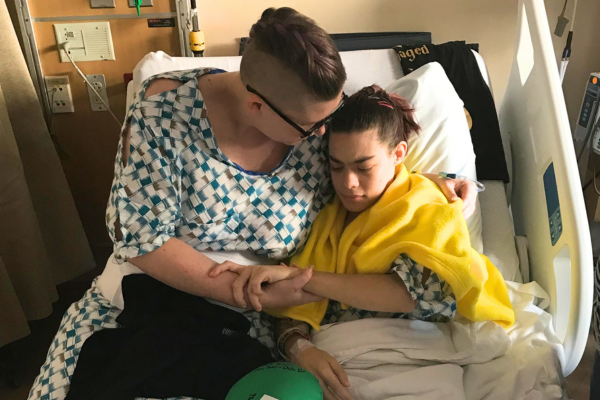
The transplant occurred on February 21, 2018.
"The transplant went well," Daylina said. "Alese needed a week and a half to adjust to the new immunosuppressant medications, but her new kidney produced urine right away."
Daylina watched in amazement as their sister came back to life.
"She had been gray and tired for so long," Daylina said. "After surgery, her color came back. She had energy again."
Daylina remained in the hospital for five days.
"This was my first major surgery. I didn't react well to anesthesia and struggled with pain," they said. "But hospital staff treated me like royalty. It was a good experience."
Recovery outside the hospital was tougher for Daylina.
"I felt really tired for about a year," Daylina said. "I also had some nerve damage on my right side. I experienced some numbness in my toes and fingertips, and a burning feeling in my stomach."
The majority of living donors do not experience these issues. However, the transplant team did warn Daylina about the possibility of these rare complications. Thankfully, their team supported them the whole way.
"The care I got was amazing. They always welcomed my follow-up questions," said Daylina. "I still see them every year at NKF's Kidney Walk in Tampa. We take pictures and walk together."
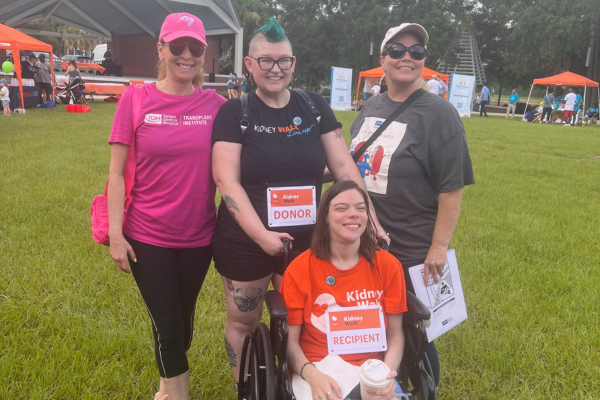
Despite the tough recovery, Daylina has no regrets.
"Alese is doing great. She has a boyfriend, hobbies, and energy. She's not stuck in bed anymore. I'd do it all again in a heartbeat."
Daylina now shares their story to raise awareness.
"At least two people told me they donated a kidney to a stranger after hearing my story," they said. "That's why I keep spreading the word about living donations. It saves lives."
Being Non-Binary in Medical Settings
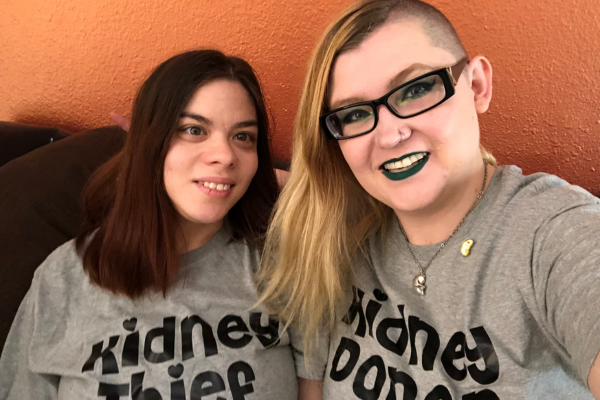
Daylina wasn't out as non-binary during the transplant, but they know how hard it can be to navigate the healthcare system as a member of the LGBTQIA+ community.
“I've had a lot of negative experiences in healthcare outside of the transplant process," Daylina said. "For example, I went to a gynecologist wearing 'they/them' earrings. The doctor looked at them, read them out loud, and immediately called me 'Miss.'"
As a journalist, Daylina is working to redefine how the transgender community is covered in the news. That's how they learned that doctors rarely receive training on how to interact with the LGBTQIA+ community.
"Most doctors don't get real training in how to care for trans and non-binary people. At most, they get one or two classes," Daylina said. "Right now, it's getting worse because schools are afraid of losing funding for having inclusive programs."
Despite this, Daylina wants others to know they deserve respect.
"Be firm. Don't hesitate to correct people if they get your pronoun or orientation wrong," Daylina said. "I've fired doctors for not respecting my identity or for making me feel uncomfortable. You can do the same. Don't stay with a provider who disrespects you."
